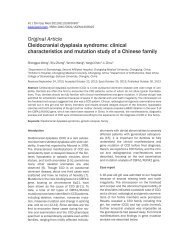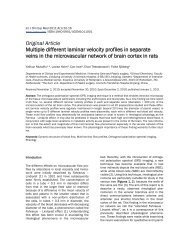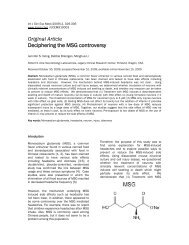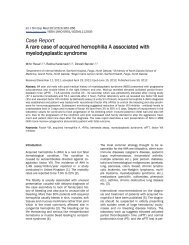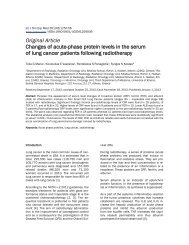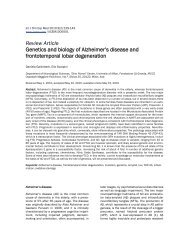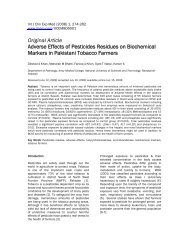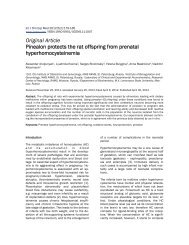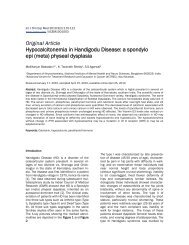Role of myeloid-specific G-protein coupled receptor kinase-2 in sepsis
Role of myeloid-specific G-protein coupled receptor kinase-2 in sepsis
Role of myeloid-specific G-protein coupled receptor kinase-2 in sepsis
You also want an ePaper? Increase the reach of your titles
YUMPU automatically turns print PDFs into web optimized ePapers that Google loves.
Myeloid-<strong>specific</strong> G-<strong>prote<strong>in</strong></strong> <strong>coupled</strong> <strong>receptor</strong> <strong>k<strong>in</strong>ase</strong>-2 <strong>in</strong> <strong>sepsis</strong><br />
Inflammatory response <strong>in</strong> the lungs<br />
In order to exam<strong>in</strong>e the role <strong>of</strong> GRK2 <strong>in</strong> tissue<br />
compartments we determ<strong>in</strong>ed the <strong>in</strong>flammatory<br />
response <strong>in</strong> the lungs. Lungs are one <strong>of</strong> the major<br />
tissue sites affected after <strong>sepsis</strong> and therefore<br />
we exam<strong>in</strong>ed the cytok<strong>in</strong>e levels <strong>in</strong> the<br />
bronchoalveolar lavage fluid (BALF) after CLP.<br />
Twelve hours after CLP, IL-6 levels <strong>in</strong> the GRK2<br />
wild type and GRK2 knockout mice were significantly<br />
elevated compared to the shams. Importantly,<br />
IL-6 level <strong>in</strong> the BALF was significantly<br />
enhanced <strong>in</strong> the GRK2 knockout mice compared<br />
to the GRK2 wild type mice (Figure 2). IL-<br />
10 levels however, did not differ between the<br />
genotypes <strong>in</strong> the BALF (Figure 2).<br />
GRK2 wild type and the GRK2 knockout mice<br />
(Figure 3).<br />
Figure 2. Cytok<strong>in</strong>e levels <strong>in</strong> the Broncho-Alveolar Lavage<br />
Fluid (BALF) after septic peritonitis: Myeloid<strong>specific</strong><br />
GRK2 knockout and the wild type littermate<br />
mice were subjected to CLP or Sham as described <strong>in</strong><br />
Figure 1. Broncho alveolar lavage fluid was collected<br />
as described before [9]. The fluid portion <strong>of</strong> the BALF<br />
was then tested for cytok<strong>in</strong>es us<strong>in</strong>g ELISA. *P



